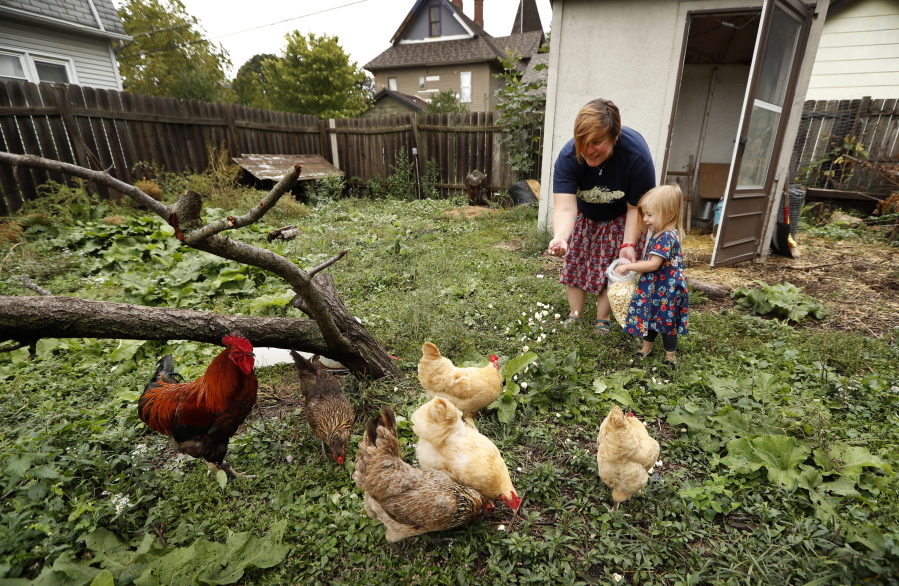DES MOINES, Iowa — Luke Gabriele was a healthy 14-year-old football player in Pennsylvania when he began to feel soreness in his chest that grew increasingly painful. After his breathing became difficult, doctors detected a mass that appeared to be a tumor.
For a week, Dan and DeAnna Gabriele thought their son was dying until tests identified the cause: not cancer, but chickens — the ones he cared for at home. They had apparently infected him with salmonella that produced a severe abscess.
The popular trend of raising backyard chickens in U.S. cities and suburbs is bringing with it a soaring number of illnesses from poultry-related diseases, at least one of them fatal.
Since January, more than 1,100 people have contracted salmonella poisoning from chickens and ducks in 48 states, according to the Centers for Disease Control. Almost 250 were hospitalized and one person died. The toll was four times higher than in 2015.
Local Angle
Two Clark County salmonella cases tied to keeping poultry
In the last two years, laboratory testing has linked two Clark County cases of salmonella to the national outbreak associated with backyard poultry.
Both local cases — one in 2016, one in 2017 — involved male children who have since recovered. The boy in 2016 was not hospitalized; the boy diagnosed earlier this year was briefly hospitalized, according to Clark County Public Health.
Clark County health officials follow up on all reported cases of salmonella with patient interviews. On average, about 12 percent of people report exposure to livestock — primarily chickens, turkeys or ducks — and most often in backyards, according to Clark County Public Health.
But this year, exposure to backyard livestock appears to be more prevalent among those with salmonella.
So far in 2017, about 19 percent of the county’s 56 salmonella cases have reported exposure to livestock. The total number of salmonella cases, however, is about the same this year as in past years, according to local health officials.
— Marissa Harshman
The CDC estimates that the actual number of cases from contact with chickens and ducks is likely much higher.
“For one salmonella case we know of in an outbreak, there are up to 30 others that we don’t know about,” CDC veterinarian Megin Nichols said.
A “large contributing factor” to the surge, Nichols said, comes from natural food fanciers who have taken up the backyard chicken hobby but don’t understand the potential dangers. Some treat their birds like pets, kissing or snuggling them and letting them walk around the house.
Poultry can carry salmonella bacteria in their intestines that can be shed in their feces. The bacteria can attach to feathers and dust and brush off on shoes or clothing.
But illnesses can be prevented with proper handling. The CDC recommends that people raising chickens wash their hands thoroughly after handling the birds, eggs or nesting materials, and leave any shoes worn in a chicken coop outside.
Salmonella is much more common as a food-borne illness. More than 1 million people fall ill each year from salmonella contamination in food, resulting in more than 300 deaths, according to the CDC.
There are no firm figures on how many households in the U.S. have backyard chickens, but a Department of Agriculture report in 2013 found a growing number of residents in Denver, Los Angeles, Miami and New York City expressed interest in getting them. Coops are now seen in even the smallest yards and densest urban neighborhoods.
For Tanya Keith, the nine hens and a rooster that she keeps behind her home in Des Moines provide fresh eggs and lessons for her three children about where food comes from.
But even as her kids collect eggs and help keep the six nesting boxes tidy, she warns them not get too affectionate.
“We don’t transfer chicken germs to our face,” Keith tells them.
Stopping the germs at home is important because safeguards against salmonella are limited at the commercial sources that sell most of the birds.
A large share of baby chicks and ducks sold to consumers come from about 20 feed and farm supply retailers across the U.S. They get their chicks from a half-dozen large hatcheries that supply tens of millions of baby chicks and ducklings each year.



